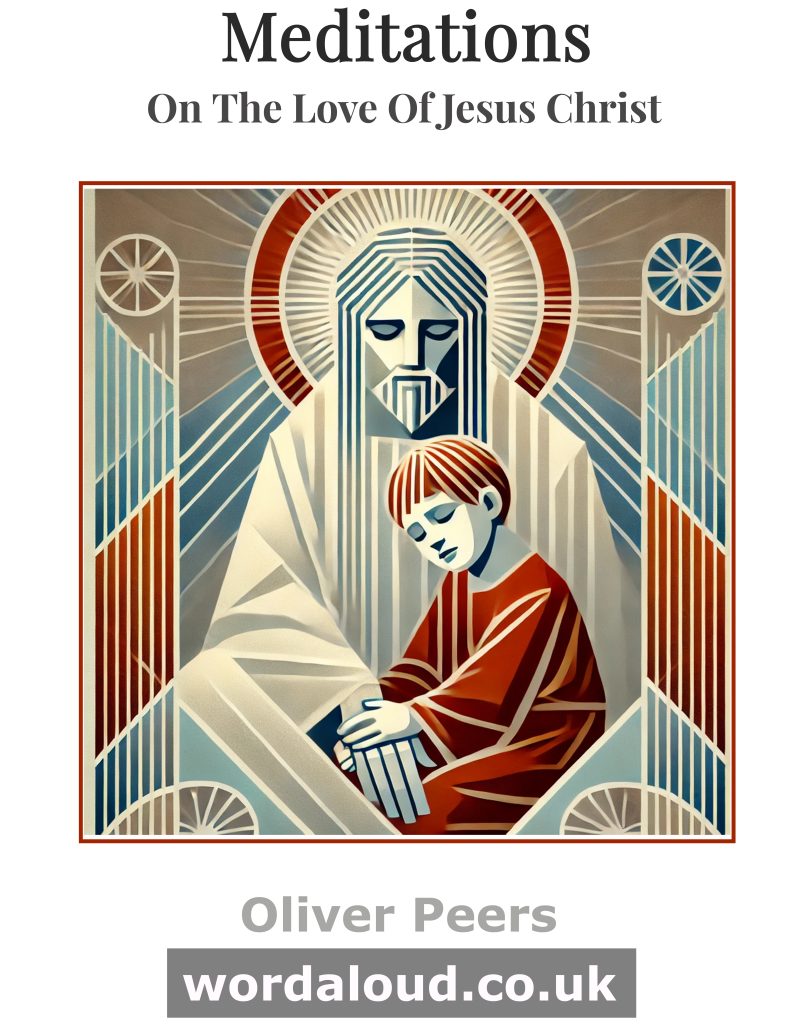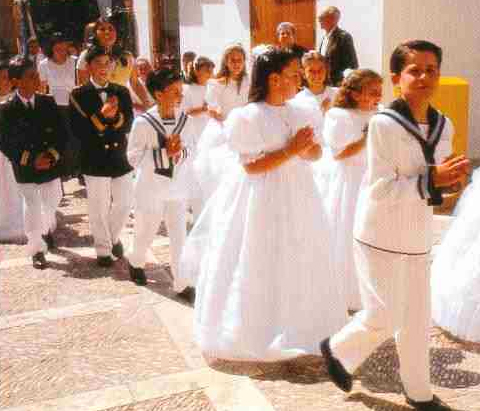Christian Art | A Boy Clothed For Baptism In Linen Prays In A Ruined Temple
Office Of Readings | Wednesday, Lent Week 2 | From The Treatise Against Heresies By Saint Irenaeus
‘Through foreshadowing of the future, Israel was learning reverence for God and perseverance in his service.’
Saint Irenaeus
In this passage from Against the Heresies, Saint Irenaeus presents a sweeping vision of salvation history, showing how God, from the very beginning, has been preparing humanity for full communion with God. Central to Irenaeus’ theology is the idea that divine pedagogy unfolds in stages, accommodating human weakness while always pointing toward Christ. Through the law, the prophets, and acts of providence, God was training his people, drawing them from earthly concerns to heavenly realities.
Irenaeus’s thought is shaped by his doctrine of recapitulation, which teaches that Christ, as the new Adam, retraces and perfects human history. Everything given in the Old Testament finds its fulfilment in him: the tabernacle, the sacrifices, the law, and even historical events like the Exodus. Saint Paul’s teaching that ‘the rock was Christ’ (1 Cor 10:4) is central to this vision. What Israel experienced in figure, the Church now experiences in reality. This emphasis on typology—where earlier events foreshadow later fulfilment—was a key part of Irenaeus’s response to Gnosticism, which rejected the continuity between the Old and New Testaments. Against such ideas, Irenaeus insists that the God of Israel and the Father of Christ are one and the same, patiently guiding humanity toward salvation.
This reading is especially fitting for Lent, a season of preparation and purification. Just as Israel wandered in the desert for forty years, learning trust and obedience, so too the Church walks the path of repentance, led by Christ. The forty days Moses spent on the mountain, receiving the pattern of divine worship, prefigure both Christ’s forty days in the wilderness and the believer’s journey toward Easter. The call to perseverance and faithfulness resounds throughout this passage: God’s work unfolds gradually, and it requires patient participation on the part of his people.
Another theme that could be drawn from Irenaeus’s thought is the role of the Eucharist. Although not mentioned explicitly in this passage, Irenaeus often speaks of the Eucharist as the culmination of God’s salvific plan—where material elements, like bread and wine, are transformed into instruments of divine life. The logic of salvation history, where God uses physical realities to communicate spiritual truth, reaches its highest expression in the sacraments, which unite believers to Christ.
Saint Irenaeus’s influence on later theology is profound. His synthesis of biblical history laid the foundation for the Church’s understanding of typology, influencing figures such as Origen and Saint Augustine. His emphasis on the unity of God’s plan continues to shape Christian thought, particularly in defending the coherence of the Old and New Testaments.
This passage invites reflection on God’s patient work in human history and in individual lives. Salvation is not achieved in an instant but is the fruit of God’s ongoing formation, in which human cooperation is required. Lent is a time to recognize this pattern, embracing the discipline that prepares the heart to receive the fullness of Christ’s redemption.

From The Treatise Against Heresies By Saint Irenaeus, Bishop
From the beginning God created man out of his own generosity. He chose the patriarchs to give them salvation. He took his people in hand, teaching them, unteachable as they were, to follow him. He gave them prophets, accustoming man to bear his Spirit and to have communion with God on earth. He who stands in need of no one gave communion with himself to those who need him. Like an architect he outlined the plan of salvation to those who sought to please him. By his own hand he gave food in Egypt to those who did not see him. To those who were restless in the desert he gave a law perfectly suited to them. To those who entered the land of prosperity he gave a worthy inheritance. He killed the fatted calf for those who turned to him as Father, and clothed them with the finest garment. In so many ways he was training the human race to take part in the harmonious song of salvation.
For this reason John in the book of Revelation says: His voice was as the voice of many waters. The Spirit of God is indeed a multitude of waters, for the Father is rich and great. As the Word passed among all these people he provided help in generous measure for those who were obedient to him, by drawing up a law that was suitable and fitting for every circumstance.
He established a law for the people governing the construction of the tabernacle and the building of the temple, the choice of Levites, the sacrifices, the offerings, the rites of purification and the rest of what belonged to worship.
He himself needs none of these things. He is always filled with all that is good. Even before Moses existed he had within himself every fragrance of all that is pleasing. Yet he sought to teach his people, always ready though they were to return to their idols. Through many acts of indulgence he tried to prepare them for perseverance in his service. He kept calling them to what was primary by means of what was secondary, that is, through foreshadowings to the reality, through things of time to the things of eternity, through things of the flesh to the things of the spirit, through earthly things to the heavenly things. As he said to Moses: You will fashion all things according to the pattern that you saw on the mountain.
For forty days Moses was engaged in remembering the words of God, the heavenly patterns, the spiritual images, the foreshadowings of what was to come. Saint Paul says: They drank from the rock that followed them, and the rock was Christ. After speaking of the things that are in the law he continues: All these things happened to them as symbols: they were written to instruct us, on whom the end of the ages has come.
Through foreshadowings of the future they were learning reverence for God and perseverance in his service. The law was therefore a school of instruction for them, and a prophecy of what was to come.








